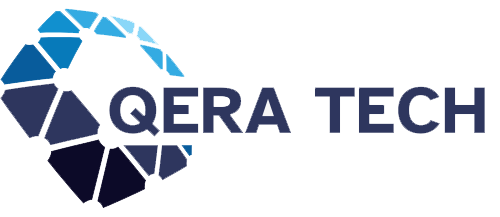Imagine starting your day with your phone reminding you about your morning meeting, your laptop already having the agenda open, and your smart speaker reading out your to-do list — all without you lifting a finger. That’s the magic of a well-planned personal AI assistant setup. It’s not just for tech enthusiasts anymore; with the right approach, anyone can create a digital helper that feels like a real assistant.
When I first started experimenting with AI assistants, I used separate tools on my phone, tablet, and computer. The result? A scattered mess where reminders on one device never showed up on another. Over time, I learned how to make them work together, and it changed everything about how I organize my life. This article will guide you through building your own personal AI assistant setup that runs smoothly across all your devices, even if you’re not a technical expert.
Why a Personal AI Assistant Setup Matters for Everyday Life
A personal AI assistant isn’t just about having a talking robot answer your questions. It’s about creating a unified system that keeps your life in order no matter where you are or which device you’re using. Without a cross-device setup, you risk losing important information in a sea of un-synced apps and forgotten notifications.
According to a 2023 Microsoft Work Trend Index report, workers spend nearly 57% of their time communicating rather than creating. A cross-device AI assistant can take over repetitive communication, scheduling, and organization tasks so you can focus on actual work. For students, it means managing assignments and class notes effortlessly. For freelancers, it means keeping track of multiple projects without missing deadlines.
The key is integration. When your phone, laptop, tablet, and even smart home devices are connected through the same AI ecosystem, you get seamless control. This is the difference between asking “What time is my meeting?” and having your AI assistant automatically prepare your notes for that meeting before you even ask.
Understanding the Core Elements of a Cross-Device AI Setup
A strong personal AI assistant setup has three main layers: the AI brain, the device connections, and the automation rules. Think of it like building a team. The AI brain is your main assistant, the device connections are the team members working together, and the automation rules are the instructions that make them efficient.
The AI brain is usually a main service like ChatGPT, Google Assistant, Apple’s Siri, or Microsoft Copilot. This is where the intelligence lives — the place you ask questions, get answers, and run commands. The device connections are all the integrations that link your phone, laptop, smart speakers, and even apps like Notion, Google Calendar, or Slack. Finally, automation rules are the “if this happens, then do that” triggers, which can be created through platforms like Zapier, IFTTT, or built-in routines.
Without all three working together, your AI assistant might be smart but disorganized. For example, you might have a great AI note-taking app on your phone, but if it doesn’t sync with your desktop, it’s only doing half the job.
Choosing the Right AI Platform for Your Needs
When I set up my own assistant, I tried multiple platforms before settling on a hybrid approach. Each AI platform has its own strengths. Google Assistant integrates deeply with Android phones and Google services like Gmail and Calendar. Siri works best if you’re fully in the Apple ecosystem. Amazon Alexa shines when you have multiple Echo devices around your home. Microsoft Copilot is ideal if you’re heavily invested in Office 365.
I also use ChatGPT Pro for more advanced tasks like writing summaries, drafting emails, or brainstorming ideas. It doesn’t replace Siri or Google Assistant, but it complements them by handling more complex or creative requests.
Here’s a quick breakdown of some popular options:
| AI Platform | Best For | Cross-Device Strength | Ecosystem Integration |
|---|---|---|---|
| Google Assistant | Android & Google Workspace users | Strong on mobile & smart home | Gmail, Calendar, Drive |
| Siri | Apple device owners | Seamless across iPhone, iPad, Mac | iCloud, Apple apps |
| Amazon Alexa | Smart home control | Works with Echo devices | Wide smart home support |
| Microsoft Copilot | Office 365 users | Works in Windows & Office apps | Word, Excel, Outlook |
| ChatGPT | Creative and advanced AI tasks | Works via browser/app on all devices | API and custom workflows |
Building Your Personal AI Assistant Setup Step by Step
When I helped a friend set this up for her small business, we started with the device she used most — her phone — and worked outward. Here’s the approach that works for both personal and professional life.
First, choose your main AI platform and log in on all your devices. If you pick Google Assistant, sign in with the same Google account everywhere. For Siri, make sure all your Apple devices share the same Apple ID. For Alexa, link the same Amazon account. This ensures that when you tell your phone to add something to your calendar, it shows up on your laptop and tablet.
Next, connect your most-used apps. This might be Google Calendar, Microsoft Outlook, Notion, Trello, or a to-do list app. Many AI assistants now have “skills” or “actions” that allow direct integration with these apps. For example, I connected my Google Calendar so I can ask, “What’s on my schedule today?” from any device, and it gives me the same answer everywhere.
Finally, set up automation routines. This is where the real magic happens. You could create a routine that, when you say “Good morning,” reads your schedule, tells you the weather, and plays your favorite news podcast. Or set one where, if you receive an email from a certain client, your assistant automatically sends you a notification on all devices.
Personal Experience: Making It Work in Real Life
When I travel, my AI assistant becomes my coordinator. Before a trip, I simply say, “Plan my travel day,” and it sends reminders about packing, checks flight times, and alerts me to traffic before I leave for the airport. The same reminders pop up on my phone, watch, and laptop without me having to set them individually.
One of my favorite wins was creating a routine for writing days. When I tell my assistant, “Start writing mode,” it automatically opens my note-taking app on my laptop, silences my phone notifications, and starts a focus playlist on my smart speaker. It feels like having a personal secretary who knows exactly how I like to work.
The biggest takeaway from my experience is that the setup takes a bit of initial work, but once done, it saves hours every week. More importantly, it reduces the mental load of remembering tasks.
Common Challenges and How to Avoid Them
The most common problem I see is people mixing platforms without a clear plan. If your phone uses Siri, your laptop uses Google Assistant, and your smart speaker uses Alexa, you’ll constantly be re-entering the same information. Whenever possible, stick to one main AI platform and only use others for special tasks.
Another issue is not checking privacy settings. Make sure you review what data your AI assistant can access and how it’s stored. For example, you might not want your assistant reading personal emails unless it’s necessary for the features you use.
Finally, don’t overload your assistant with unnecessary routines. Start with a few key automations and build from there. Too many, and you’ll end up confused about what’s triggering when.
Tips for an Effective Cross-Device AI Experience
Think of your personal AI assistant setup like building a habit. Start small — maybe syncing just your calendar across devices — and expand once you’re comfortable. Always test routines before relying on them for something important. I once had a reminder routine that worked perfectly on my phone but didn’t trigger on my laptop, and it caused me to miss a meeting. Testing saves you from surprises.
Also, give your AI assistant a clear communication style. Short, direct commands work best. Instead of “Hey, could you maybe tell me if I have anything going on tomorrow afternoon?” say, “What’s on my schedule tomorrow after 1 PM?” The AI responds faster and more accurately.
The Future of Personal AI Assistants
Tech industry analysts predict that personal AI assistants will become even more personalized over the next five years. Imagine an assistant that not only knows your preferences but can anticipate your needs. For example, it might detect you’re running late for a meeting and automatically send a message to the other participants.
We’re also seeing a rise in AI assistants that blend work and personal life seamlessly, handling everything from grocery lists to project deadlines. For anyone willing to set up a cross-device system now, you’ll be ahead of the curve as these assistants get smarter.
Conclusion: Start Your Setup Today and Reap the Benefits
A well-planned personal AI assistant setup can feel like adding an extra brain that works 24/7. By choosing one main AI platform, connecting it to your devices, and setting up smart routines, you create a system that not only saves time but also reduces stress.
When I look back at how disorganized I was before syncing my devices, I can’t imagine going back. Now, my AI assistant greets me in the morning, helps me through the day, and makes sure I never miss a deadline. The sooner you start your own setup, the sooner you’ll enjoy the same freedom.
So, pick your platform, sync your devices, and take that first step. Your future self — and your productivity — will thank you.

